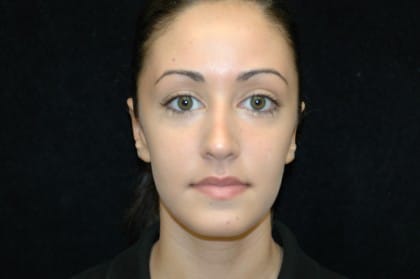CONTACT US
TEXTING AVAILABLE! For a text response feel free to text the number provided on your screen after filling out this form.
Ear Surgery (Otoplasty)
Conveniently located to serve the areas of Maryland, Virginia and Washington, D.C.
People don’t often notice a well-shaped ear, but they will notice an abnormally shaped ear. There are different factors that can make an ear appear misshapen, including being present at birth or as a result of trauma to the area. Ears may appear too large or too small, or one may not match the size and shape of the other. At times, part of an ear is missing or they protrude too far away from the head. Sometimes, especially for children, these irregularities can lead to teasing or low self-esteem. These are all reasons why people choose to get ear enhancement surgery in Maryland and Virginia with the otoplasty experts of Cosmetic Surgery Associates.
Call Cosmetic Surgery Associates today to set up a consultation with Dr. Richards, Dr. Jabs, or Dr. Magge and find out more about the potential benefits of otoplasty. Our office is located 16.1 miles from Arlington, VA and 8.3 miles away from Silver Spring, MD.
What is Otoplasty?
Otoplasty, otherwise known as ear surgery or ear enhancement, is usually performed to correct the appearance of misshapen ears. It is also sometimes called ear pinning because it can work to realign ears that protrude too far away from the head. Some otoplasty techniques include adding or removing cartilage to sculpt an ear or pulling back protruding ears by suturing. The goal of otoplasty is to restore harmony, symmetry, and proportion to ears in relation to the rest of the face and visage.
The procedure can be performed as early as age five and can be done under local anesthesia. Ears are almost fully grown by the age of five, and the earlier the surgery, the less teasing, and ridicule a child will have to endure. But, ear setback procedures are also commonly performed on adults. Patients report renewed confidence and self-assurance after choosing to undergo ear surgery.
Conditions Ear Surgery Can Address
- Overly large ears
- Very small ears
- Constricted ear: The top portion of the ear (pinna) didn’t fully form and is in turn constricted.
- Asymmetrical ears
- Cauliflower ear: Deformity in shape caused by injury or trauma to the ear. Very common with boxers.
- Protruding ears: Ears projected abnormally far from the head.
- Cryptotic ears: The naturally protruding rim of the ear is concealed under the skin.
Ideal Candidates
Otoplasty may be a good procedure for non-smokers who have large, protruding, or misshapen ears.
Otoplasty can be performed on both children and adults with fully developed ears. For children, by undergoing otoplasty at a young age, children avoid years of teasing or bullying that can arise from having ears that look different from other children.
Otoplasty is a viable surgical procedure for candidates who were born with irregularly shaped ears. However, some candidates come to us with ears that have been disfigured due to trauma or previous surgery. Each doctor works closely with their patients to determine the best procedure or technique for their specific case.
As with any surgery, the patient should be in good health and have the ability to heal properly. They should also have realistic expectations for the procedure. We recommend viewing some of our before and after photos of other otoplasty patients in order to get a reasonable understanding of what can be accomplished, although results differ for each individual.
Consultation
During the initial consultation, one of our doctors will discuss the patient’s current concerns with their ears to find out what they hope to achieve from an otoplasty procedure. The doctor will also ask about any medications the patient currently takes, the medical conditions they have, or previous surgeries they have undergone. Finally, an examination of the ears will be conducted in order to determine whether or not the patient is a good candidate for otoplasty.
If they are a good candidate, then a custom procedure plan will be drafted for the patient depending on the specifics of their case and a surgery date will be scheduled. Our doctors and experienced staff will go over the procedure, preparation, and recovery in detail. At this time, they will also be able to provide a more accurate cost estimate.
At Cosmetic Surgery Associates, we aim to make every patient feel as comfortable as possible. Please feel free to ask any questions regarding the procedure or about other procedures that are of interest. Call us today at our Bethesda location or contact us through our online form to get started.
Procedure
Otoplasty is an outpatient operation typically performed under local anesthesia and sedation or general anesthesia. This choice will depend on the extent of the operation to be performed and the patient’s personal comfort. The entire procedure typically takes about two to three hours.
Most incisions for otoplasty are made behind the ear where the resulting scars will not be visible. From this placement, the surgeon will be able to remove the necessary amount of cartilage to reduce the projection of the ear from the head. In some particular cases, an incision may be necessary for the front of the ear. These incisions will be hidden in the natural folds of the ear to minimize scarring.
Techniques
There are various techniques for reshaping, repositioning, and resizing the ear at our surgeons’ disposal. Depending on the individual case, one or more of the following techniques may be utilized.
Ear Augmentation
In cases where a patient’s ear is either too small or part is missing, ear augmentation may be the preferred approach. This involves harvesting cartilage from another part of the body, such as the other ear or the rib. Then, this cartilage would be grafted onto the parts of the ear to be built. The results look very natural once healed.
Ear Reduction
For patients who have ears that are too large, an ear reduction technique will be employed. In this procedure, the doctor will create small incisions in the appropriate places and remove excess tissue or cartilage. They will sculpt the ear to acquire the desired, proportional shape and suture the incisions.
Ear Pin Back
An ear pin back is specially designed for ears that protrude too far from the skull. Using an incision on the back of the ear in the natural crease, the surgeon will remove excess skin or cartilage. Then, they will use sutures to keep the ear in a more desirable, pinned back location. In some cases, these sutures may be permanent.
Exterior Ear Fold Manipulation
In cases where the outer upper ear fold has not formed properly, the surgeon will utilize one of three techniques.
- Suturing: Sutures will create tension and help fold the upper ear back into a proper position.
- Abrasion: By applying rough pressure and texture to the upper ear, the fold will begin to naturally bend away from the abrasion into a more desirable position.
- Incisions: Horizontal incisions are made running along the inside of the upper ear fold. Then, tubing sutures are placed along these incisions to create the appearance of a natural bend.
Conchal Alteration
In order to manipulate the appearance of the concha, or middle of the inner ear, there are two techniques at our disposal. In some cases, a combination of these two techniques may be most efficient.
- Sutures: Sutures can create tension to decrease the protrusion of the concha.
- Conchal Excision: This involves removing a part of the concha from the inner ear to reduce height. It can then be reused to add height to the upper ear, if necessary.
Recovery and Results
After surgery, the ear will be properly bandaged. It is important to keep these bandages on for the prescribed amount of time to let the ears heal properly. Patients may be asked to wear a headband at night to minimize trauma or disturbance to the ears while they sleep, at least until they settle into their final position. Patients should also avoid contact sports for at least a month.
There will be some pain or discomfort following surgery that can be controlled either with a prescription provided by the doctor or over-the-counter medication. Bruising and swelling should go down over the course of two to three weeks. To minimize swelling or other potential side effects, we recommend that patients keep the head elevated, avoid sleeping on their sides, and do not take anti-inflammatory medications like ibuprofen or aspirin.
Any incisions from the surgery will have been hidden behind the ear, in the natural crease, or in the undulations in front of the ear. Resulting scars should not be visible to the eye. However, the scars will continue to fade over the course of one to two years and blend in with the natural borders and creases of the ears.
Patients can usually expect to return to work in about one week. However, this may vary for certain cases and the extent of the work to be done. Children may require slightly more time to recover.
Schedule an Ear Surgery Consultation
For patients interested in ear surgery it is advised that you reach out to set up a one-on-one personalized consultation with one of our board-certified plastic surgeons. During the consultation, our surgeons will help determine if you are a good candidate while reviewing the procedure with you and answering any questions you have. Our office is located just 2 miles away from North Bethesda and 5 miles away from Potomac & Rockville.
Our Plastic Surgery Associates team includes Dr. Franklin Richards, Dr. A. Dean Jabs, and Dr. Keshav Magge. Each of our plastic surgeons is board-certified, and together they have over 60 years of combined experience. Drs. Richards, Jabs, and Magge are all highly qualified in procedures for the face, breast, and body, and pride themselves in providing excellent results through our state-of-the-art, Quad A certified operating centers















